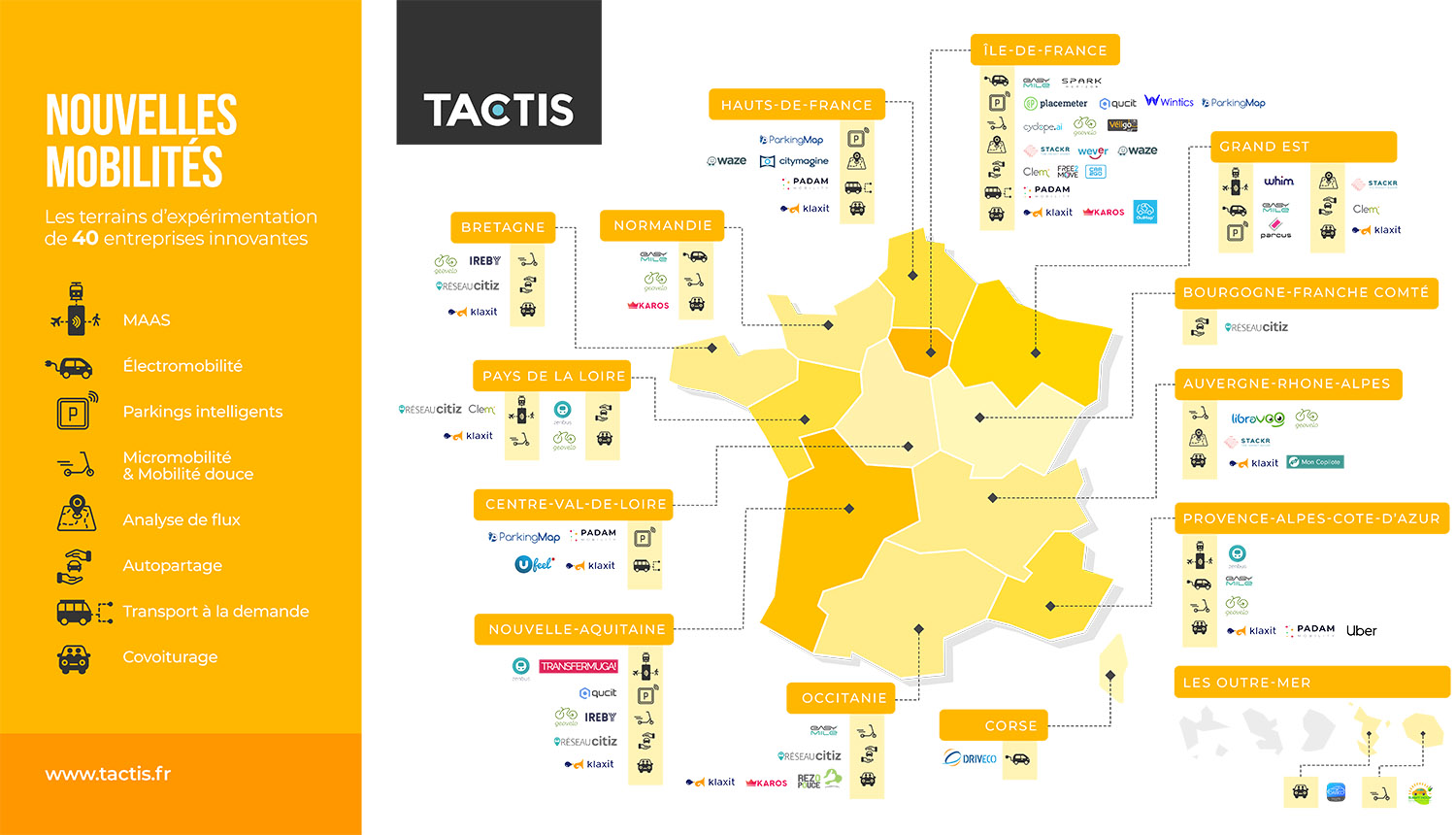Mobility: An Economic, Social, and Environmental Challenge
Mobility is a criterion for accessibility to services in urban, peri-urban, and rural areas. For local authorities, the challenge is to position new mobility solutions to revitalize their city centers and offer new services to their residents (saving time, money, improving work-life balance, etc.).
Rising environmental concerns make mobility a key driver of sustainable development in a context where transportation accounted for 29% of greenhouse gas emissions in France in 2017, half of which were emitted by private vehicles. In addition to the direct consequences on the environment, transportation also impacts the quality of life of citizens in urban areas, with increasingly significant consequences for their health, particularly quality of life and well-being (noise, congestion).
Finally, mobility is also a challenge for public finances. Transport accounted for €46.3 billion of total public spending in 2017. Historically, public stakeholders have financed and organised transport through public transport. The last decade has seen the emergence of mobility solutions driven by new entrants, enabling the expansion of carpooling, the smoother flow of parking and the development of micro-mobility (bicycles, scooters, etc.).
These new players are questioning the role and place of AOMs (Mobility Organizing Authorities), for example by offering mobility solutions directly to employers, or by addressing the daily travel needs of travelers (guidance platforms, MAAS applications on citizens' travel choices, etc.).
Mapping: Who are the 40 French innovators shaking up the new mobility sector?
The mobility solutions identified allow us to distinguish various themes that meet the expectations of communities and citizens. These themes reflect the development of:
Mobility As A Service: A solution that guides citizens in their use of multimodal transportation.
Electromobility: Use of modes of transportation based on electrical energy.
Smart Parking: Intelligent, modular, and real-time management of parking spaces.
Micromobility and Soft Mobility: Individual and portable means of transportation (bicycles, scooters, etc.).
Flow Analysis: Traffic analysis to improve and optimize traffic management.
Car Sharing: Provision of a fleet of vehicles that can be used by multiple individuals.
On-Demand Transport: A means of transportation that does not adhere to fixed routes or schedules.
Carpooling: Car use by multiple users at the same time.
Disruptions linked to changing needs and technical advances
Citizens' expectations regarding mobility have evolved significantly around three main factors. Mobility is now perceived more as a service. Environmental issues are pushing citizens to adopt more environmentally friendly modes of transportation (bicycles, electric mobility). Finally, the diversity of travel modes leads to even greater expectations in terms of availability, service, and speed, within the framework of "user-oriented" applications.
These changes are occurring alongside technical progress and the rise of digital technology. These trends have largely enabled these disruptions, particularly in the areas of electromobility and service responsiveness.
The Interdependence Between Public and Private Stakeholders
More than a quarter of new mobility solutions appeared in 2018. Some have also developed more recently. For example, stakeholders addressing micro-mobility and soft mobility launched their activities in 2018, while traffic analysis solutions appeared in 2014, accompanied by the emergence of AI. In terms of shared services, car sharing has been developing since 2010 and home-to-work ridesharing since 2015.
All of these solutions improve and diversify the user experience. However, some stakeholders provide more structured solutions that require a rethinking of regional infrastructure and organization. Electromobility, micromobility, and soft mobility are creating a new need for roadway development: installing charging stations, adapting traffic spaces and regulations, sensors and cameras, and even carpooling areas.
In this context, local authorities, and more specifically public authorities (AOMs), are resuming their role as planners and regulators. While most of the solutions identified are led by private stakeholders who provide solutions to citizens without any interaction with public stakeholders, the latter play a facilitator role, especially when these solutions impact urban planning or land management. For example, the partnership between the Versailles Grand Parc urban area and the Waze platform demonstrates that when it comes to data, public stakeholders and platforms are interdependent.
Interdependence between public and private stakeholders
More than a quarter of new mobility solutions appeared in 2018. Some have also developed more recently. For example, stakeholders addressing micro-mobility and soft mobility launched their activities in 2018, while traffic analysis solutions appeared in 2014, accompanied by the emergence of AI. In terms of shared services, car sharing has been developing since 2010, and home-to-work ridesharing since 2015.
All of these solutions improve and diversify the user experience. However, some stakeholders provide more structured solutions that require territorial and organizational changes. Electromobility, micro-mobility, and soft mobility are creating a new need for roadway development: installation of charging stations, adaptation of traffic regulations and space, sensors and cameras, and carpooling areas.
In this context, local authorities, and more specifically AOMs, are resuming their role as planners and regulators. While most of the solutions identified are driven by private stakeholders who provide solutions to citizens without any interaction with public stakeholders, the latter assume a mediating role, especially when these solutions impact urban planning or land management. For example, the partnership between the Versailles Grand Parc urban area and the Waze platform demonstrates that, when it comes to data, public stakeholders and platforms are interdependent.
Unequal effectiveness of solutions across territories
Depending on the type of territory, stakeholders' expectations differ. Citizens living in urban centers express a need for speed, availability, and adaptability in their travel. MaaS-type solutions, smart parking, or flow analysis then offer a new lease of life to the use of public transport and the use of cars in city centers, while micro-mobility and soft mobility appear as new solutions to avoid the last mile.
On the other hand, for citizens residing in peri-urban and rural areas, the needs concern long-distance journeys (over 5 kilometers), and sharing-based models aimed at reducing transportation costs are favored. Therefore, short-distance carpooling, car sharing, and on-demand transportation solutions appear to be the most relevant. For urban and peri-urban areas, these sharing solutions present an opportunity to reduce congestion in urban and peri-urban areas, contribute to the climate challenge, and offer a new service based on sharing and the mobilization of active human communities. Documentary resources:
- The Mobility Observatory, Les Echos ETUDES, March 2019
- Inventory of air pollutant and greenhouse gas emissions in France, CITEPA, July 2019 – Secten format, Report No. 1632sec / 2019
- Transport Accounts in 2018, National Transport Accounts Commission, August 2019, Report No. 56,

Nicolas Potier
Contact Nicolas Potier
Do you have a question about new forms of mobility? Need some clarification regarding a future project? Send an email to Nicolas Potier, Associate Director at Tactis.


